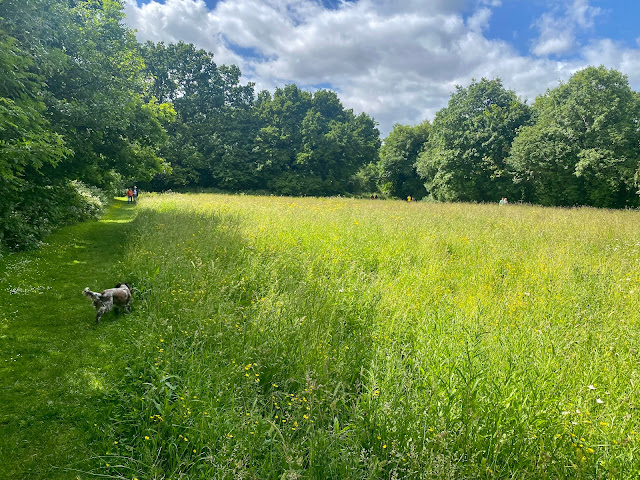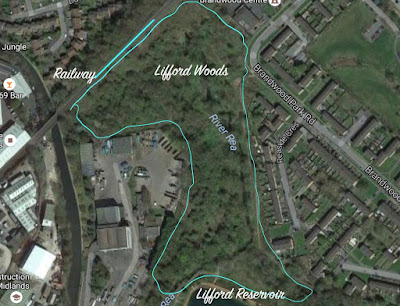Meadows and Pastures. The Cannon Hill Park Meadow
Meadows and pastures traditionally served the same purpose for feeding cattle and sheep throughout the year, pastures for all-year grazing and meadows providing hay for winter feeding, and these grassland features would have been an integral part of the city structure and development of the marketplace well into the 20th century.
Many of our meadows are now managed for their wildlife value, maintained and enhanced on a single 'cut and collect' regime each year. By removing the nutrient-rich cuttings, the practice ensures a nutrient-poor soil layer, thus enabling a variety of flowering plants to thrive, rather than a coarse grass-dominated grassland.
 |
| Cannon Hill Meadow 2022 |
Highgate Park was Birmingham's first purchased municipal park, bought by the city council from a Trust set up at the request of the previous landowner Elizabeth Hollier in 1790, with an official acknowledgement by Mayor Joseph Chamberlain in 1876, three years after the opening of Cannon Hill Park. Up until then, the site was used for centuries as a grazing area for fattening cattle and sheep before herding along Bradford Street to the marketplace
Much of the parkland we know today had similar origins as pasture and meadow and later bequeathed to the people of Birmingham by benefactor land owners.
Whilst pasture land was mostly, if not entirely used for grazing, meadows traditionally provide hay for animal winter feeding, again both of these practices occur in city nature reserves today.
 |
| The reconstructed 18th-century map of Moseley by Andy Slater |
The main consideration for grassland management in city parks today is nature conservation, and the value of flower-rich meadows is now appreciated by many local authorities throughout the UK and Europe.
 |
| Cannon Hill section from the Mosely Tithe map by Andy Slater |
 |
| Common Spotted Orchid |
 |
| 2022 partial cut and collect |
Since the 2016 hay strew, many new species have been introduced and seem to be thriving in the new setting. Common Spotted and Green Winged Orchids bloomed in good numbers and other species, such as Black knapweed, vetches, and trefoils have also flowered well this year.
Follow this video link to see a variety of plants and invertebrates living in the meadow
https://www.facebook.com/watch/?v=885311538485357
This year we decided to cut just half the meadow and leave the uncut vegetation as a winter habitat for small mammals, amphibians and invertebrates. This will then be cut early next year.



Comments
Post a Comment